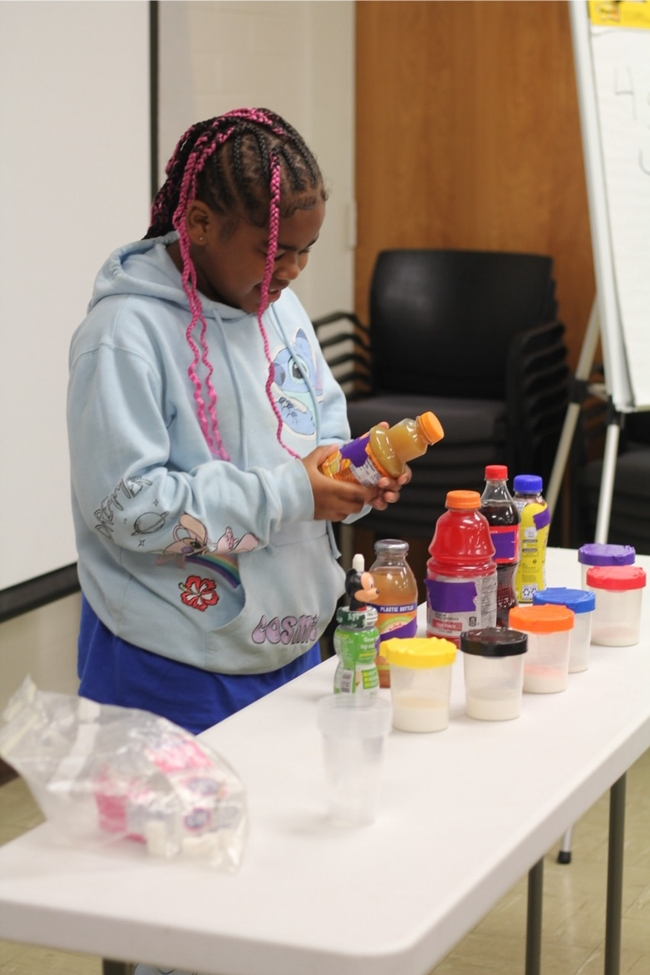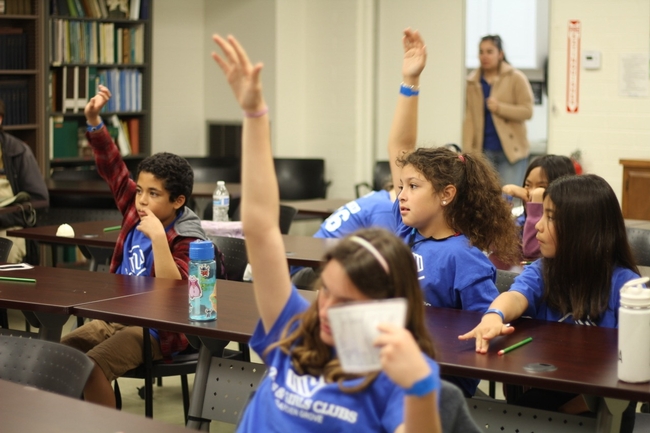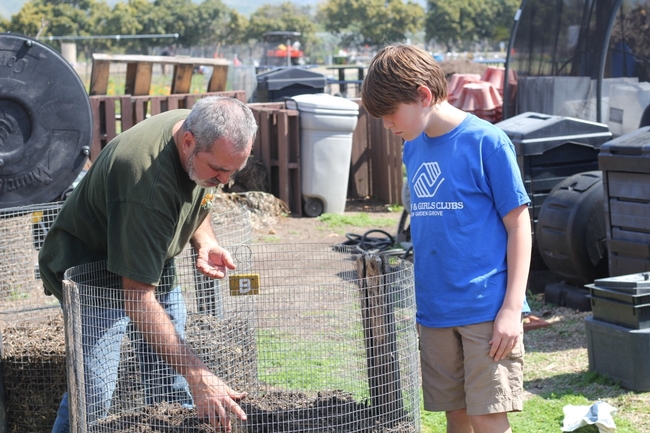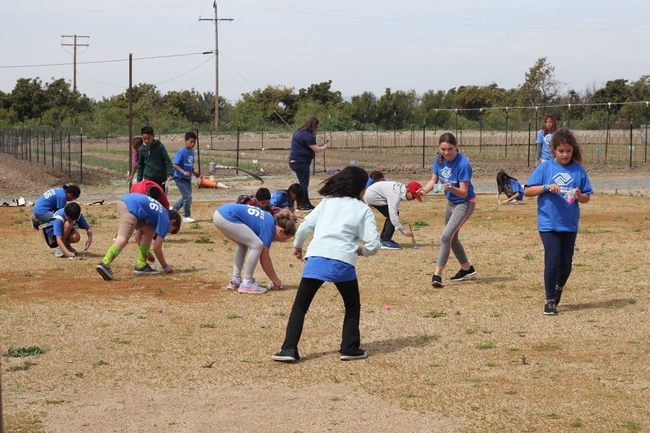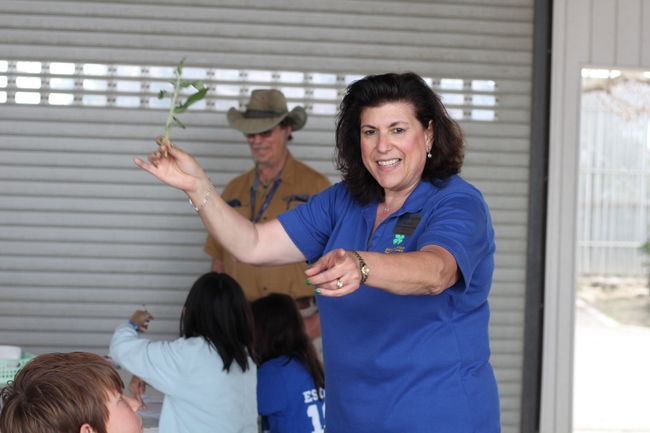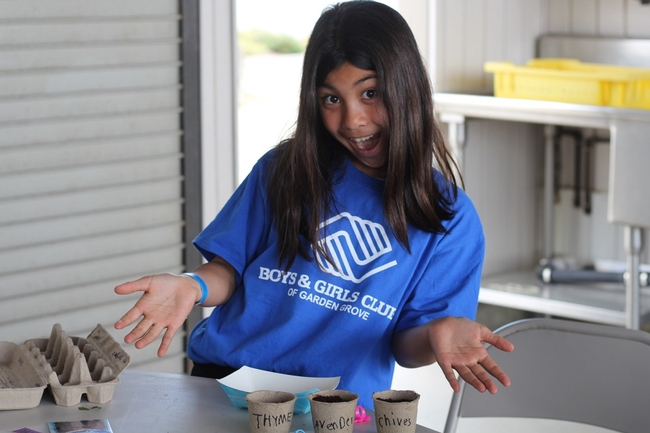4-H, Boys and Girls Club, UCCE partner to inspire Orange County kids
Small containers with varying levels of sugar sit next to a row of beverages, including water, fruit juices, soda, a sports drink and chocolate milk. Trying to match each container with the beverage that contains its corresponding amount of sugar, Amore, a fourth grader, reads the nutrition label on the orange juice bottle. “What does the bottle say?” asked a student in the audience, attempting to help Amore.
Life skills such as how to read a nutrition label are representative of learning that youth can expect when joining 4-H, a nationwide program focused on empowering kids ages 5 to 18. 4-H offers experiential learning opportunities ranging from STEM (Science, Technology, Engineering and Mathematics) and healthy living to civic engagement and leadership.
To expand its reach and make their program more accessible, 4-H launched a digital learning platform called CLOVER by 4-H that offers content tailored for three types of users: learner, parent and educator. As the platform grows in popularity, 4-H is eager to identify best practices in engaging new users to join the platform and retain their interest.
More than 250 free 4-H lessons
In California, 4-H programs are overseen by University of California Agriculture and Natural Resources. Given its successful contributions to statewide initiatives in the past, 4-H in Orange County, administered through the local UC Cooperative Extension office, was one of three counties selected to participate in a CLOVER pilot project in conjunction with the National 4-H Council. With more than 250 4-H lessons available online at no cost, the pilot project aims to introduce its users to 4-H.
To generate interest, 4-H in Orange County is leveraging connections to local Boys and Girls Clubs. In March, they hosted more than 20 kids from the Boys and Girls Club of Garden Grove (BGCGG) – including Amore – for a day of learning and exploration at the UC South Coast Research and Extension Center in Irvine, where the 4-H program for Orange County is based.
Rita Jakel, community education specialist and program coordinator for 4-H of Orange County, said that partnering with BGCGG will, hopefully, inspire its members to join their local 4-H club.
“The youth created a CLOVER account before engaging in eight CLOVER lessons taught by the staff at the Boys and Girls Club during their weeklong Spring Break Day Camp,” said Jakel, noting that the participants were introduced to 4-H before arriving to South Coast REC for in-person activities.
Interactive nutrition and gardening lessons
During their visit, the participants engaged in a typical day of 4-H lessons featuring presentations from the local Expanded Food and Nutrition Education Program (EFNEP) and UC Master Gardener volunteers. Jakel then wrapped up with interactive sessions on animal adaptations—understanding the challenges animals face in gathering food—as well as lessons on growing and cooking with herbs.
“One of the most rewarding aspects of working with young people is the opportunity to creatively educate them on various subjects, ensuring that learning is both enjoyable and engaging,” said Javier Miramontes, community nutrition and health supervisor for EFNEP in Orange and Los Angeles counties, who started the day off with the lesson on nutrition labels.
Miramontes visually explained how much sugar is found in various beverages and then challenged the students to do so on their own. “It's important to me that all students participate, as engagement is key at their age, not only for inclusivity but also to maintain their focus,” he said. Miramontes concluded with a review of his lesson and was pleased that most of the class demonstrated a solid understanding of the key topics.
While the intention of CLOVER is to introduce users to 4-H in hopes that they would want to become members of their local clubs, Jakel believes that participating through CLOVER could be just as effective, if not more. “We're testing out the idea of bringing kids to our facility for typical 4-H programming. If they like it, our hope is that they'll sign up on CLOVER and gain access to our educational approach there,” said Jakel.
4-H in person and online
The goal is to give youth options so that the 4-H experience, whether in person or online, does not feel out of reach.
When discussing their collaboration, Jakel said that the BGCGG staff would continue to support interested kids and their families with CLOVER registration. The staff also agreed to conduct programming based on the digital platform at their facility to continue exposing BGCGG members to all that 4-H has to offer, which they have already reported as easy to implement and engaging among the youth.
During their time in the garden, members learned about vermiculture and how worms are essential for compost. Mary Nguyen, STEM specialist for BGCGG, said that she enjoyed watching the youth light up when they are playing in the dirt and learning about how fruits can be combined to produce new generations. To wrap up their visit to the garden, the group received a small worm box to use for their own school garden.
“I hope that more fun field trips – and hands-on activities involving research that youth can participate in – will come from our partnership with South Coast REC and 4-H,” Nguyen said.
Field trips to see, touch, smell and taste
From a UC Master Gardener's perspective, the youth were extremely interested in learning about everything and asked many questions. “I loved their curiosity,” said UC Master Gardener volunteer Laura Holly, who helped with the garden demonstration and tour of UC South Coast Research and Extension Center. “They wanted to know why certain pipes were painted purple (to indicate reclaimed water), about the windmills and how avocado trees are grafted.”
“More children would benefit from seeing how the trees that produce the fruit they eat grow,” Holly added.
Hannah, a fourth grader, said that she loved the lesson on herbs that Jakel led before the participants boarded the bus to return home. All members got to see, touch, smell and taste four different herbs before planting their own to take home. “I had a lot of fun. I think if I had to grow one thing, it would be chives. They actually taste really good,” Hannah said.
Amore, who knew what lavender smelled like before, had never seen a lavender plant. “My mom loves lavender, but I didn't know this is what it looks like. I planted some lavender to take home for her,” she said.
The partnership with BGCGG is one of many that Jakel hopes to foster in Orange County, in addition to uniting UCCE programs to enrich the learning experience for youth who visit South Coast REC and those enrolled in the 4-H program. Her goal, in line with that of CLOVER, is to make 4-H programming more accessible for the youth, parents and educators alike.
To learn more about 4-H in Orange County, visit https://oc4h.org/.

